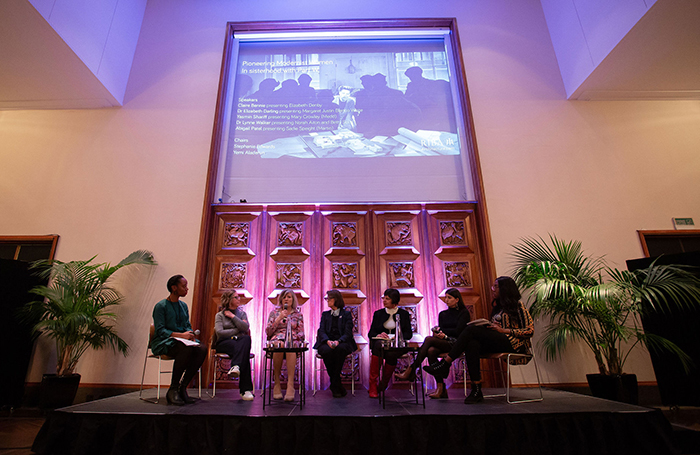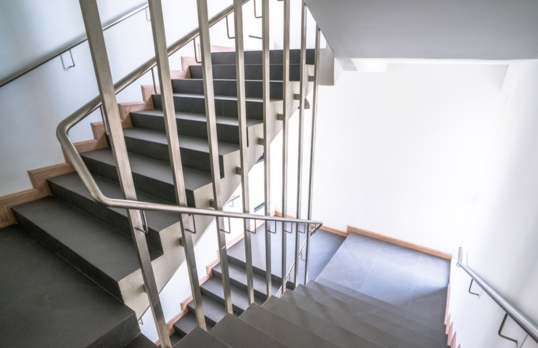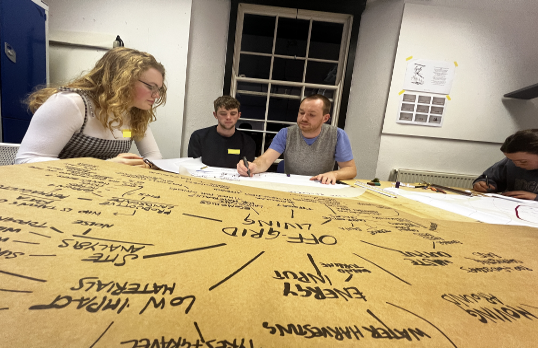To coincide with our Beyond Bauhaus – Modernism in Britain 1933–66 exhibition and its associated display László Moholy-Nagy in Britain – Between the New Vision and the New Bauhaus, we put together a full season of talks, tours and workshops for guests to learn more about the Bauhaus school and its legacy in Britain. Key themes explored in the programme included the importance of the personal relationships formed at the Lawn Road Flats to the dissemination of modernism in Britain, the under discussed role played by a group of pioneering modernist women, and how the London suburb of Hampstead became a nexus for both the cultural elite and an infamous communist spy network.
Find out more below about our Beyond Bauhaus season of events:
Bauhaus Curator Tours, 15, 22 October 2019, 5 November 2019 and 21 January 2020
Led by RIBA curators Pete Collard and Valeria Carullo
On the centenary of the Bauhaus school, one of the most famous and influential design schools in modern history, the Beyond Bauhaus exhibition looked afresh at the birth of Modernism in Britain.
Throughout the exhibition season, RIBA’s curators offered several of tours of the exhibition providing an exclusive insight into the detailed architectural surveys and archival research, showcased by the unique installation design by Chilean architects Pezo von Ellrichshausen.
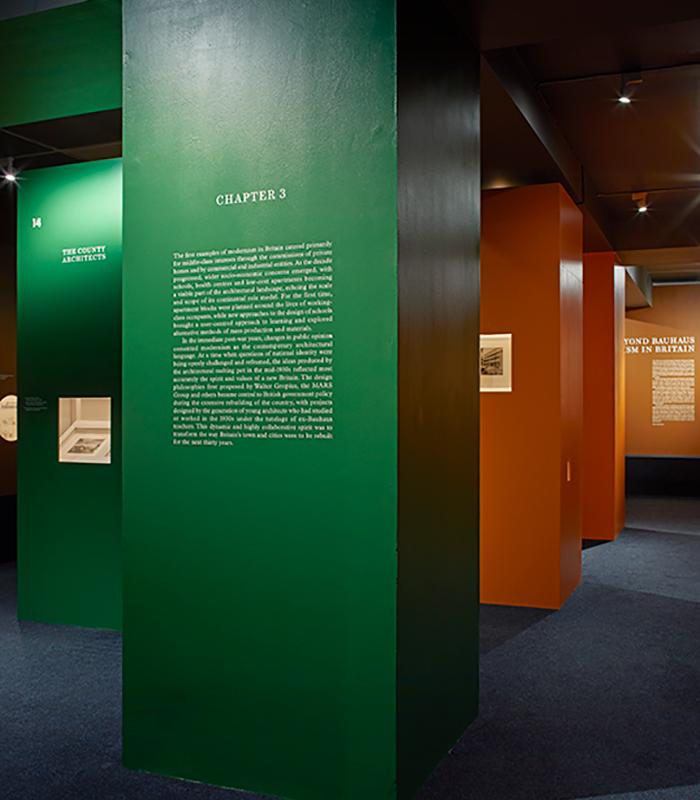
Walking Tour: When Bauhaus met the Hampstead Spies, 20 October 2019
Led by Stewart Purvis
On a block of flats in North London there is an English Heritage blue plaque which records that the "Pioneers of Modern Design at the Bauhaus lived here". The Isokon Building was the home of Walter Gropius, Marcel Breuer and László Moholy-Nagy when they came to London in the 1930s.
Not surprisingly, there is no blue plaque marking the fact that it was also the home of the KGB’s top recruiters: the people who signed up spies such as Kim Philby and Klaus Fuchs. As far back as the Russian Revolution the area had become known as "the Bolshevik colony of Hampstead" and by 1942 MI5 believed it was "a district which is well populated with persons of communist type and sympathies".
This walking tour was led by spy historian Stewart Purvis, who has researched MI5 files and other sources to work out who lived where among the architectural, cultural and espionage elite. The walk included a visit to the Isokon Gallery for a chance to see what life was like for Gropius, Breuer and Moholy-Nagy.
Beatriz Colomina: The Perversions of the Bauhaus, 31 October 2019
The Bauhaus was never straight — despite its obsessive rhetoric of rationality, clarity, efficiency, smooth hygienic surfaces and clear-cut lines. In fact, Bauhäusler were engaged with everything that escapes rationality: sexuality, violence, esoteric philosophies, occultism, disease, the psyche, pharmacology, extra-terrestrial life, artificial intelligence, chance, the primitive, the fetish, the animal and plants. The Bauhaus was a veritable cauldron of perversions.
This lecture by architectural historian Beatriz Colomina celebrated the perversions of the Bauhaus, which although have been repressed by most of the discourse around it, were in fact the source of its remarkable force.
The event also included an introduction and Q&A by Priya Khanchandani, Editor at Icon Magazine.
Beatriz Colomina is an internationally renowned architectural historian and theorist who has written extensively on questions of architecture, art, technology, sexuality and media. She is Founding Director of the interdisciplinary Media and Modernity Program at Princeton University and Professor and Director of Graduate Studies in the School of Architecture.
Burning Down the Haus: Broadening Perspectives on British Modernism, Six-week course held on Tuesdays 29 October, 5, 12, 19, 26 November and 3 December 2019
This weekly evening organised in partnership with the Society of Architectural Historians Great Britain (SAHGB) course examined the role of the Bauhaus in the development of Modernism in Britain. Each week’s discussion was led by guest experts, including author of ‘Bauhaus Goes West’ (2019) Dr Alan Powers, Dr Neal Shasore (University of Liverpool), Dr Julian Holder (University of Oxford), Magnus Englund (Isokon Gallery) and Dr Elizabeth Darling (Oxford Brookes University).
The course title conveyed an irreverent but constructive approach. Unquestionably, the Bauhaus occupied a significant presence in British design consciousness after 1933 – largely due to the arrival of Walter Gropius and other émigré architects and designers. This has, however, obscured parallel movements in Britain and elsewhere and closer examination reveals a more interesting and complex story across the fields of art, product design, education and architecture. Over six weeks the attendees heard from experts in architectural and cultural history and engaged with a range of cultural issues from 20th-century Britain that still has contemporary relevance.
A Night at the Isokon, 1 November 2019
For one night only RIBA provided visitors with an opportunity to get inside the Isokon to hear from experts on the history of this iconic building and its avant-garde residents. Attendees were also given exclusive access to the Penthouse and the flat where Walter Gropius lived. Organised around two sessions, the evening featured contributions from RIBA curators Valeria Carullo and Pete Collard, authors Magnus Englund and Leyla Daybelge, alongside special insights from John Allan, former Director of Avanti Architects, British architectural historian Elizabeth Darling and Hampstead spy ring expert Stewart Purvis.
The event was organised in collaboration with the Isokon Gallery Trust
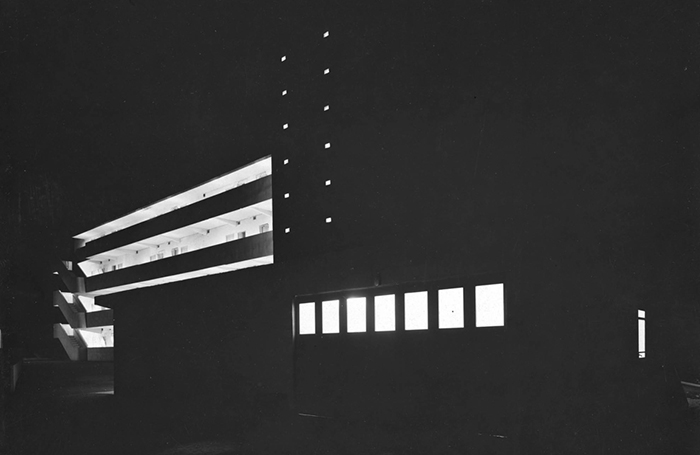
Modernising Modernism, 26 November 2019
Many of the country’s most iconic pre-war and post-war Modernist buildings have undergone restoration in recent years. This event brought together five architectural practices who have worked on some of the UK’s most significant examples of Modernist architecture, to give short presentations on their diverse approach to refurbishing, preserving and conserving these buildings.
Speakers included:
- Sam Causer of Studio Sam Causer on Kensal House
- Christophe Egret of Studio Egret West (SEW) on the refurbishment of the Balfron Tower
- Fiona Lamb of Avanti Architects on the regeneration of the Isokon Flats
- Roberta Marcaccio on behalf of DSDHA on the refurbishment of Smithson Plaza (formerly the Economist Plaza)
- Jon Wright of Purcell on the re-purposing of High Cross House
- Chair: Angela Brady OBE PPRIBA, co-founder of Brady Mallalieu Architects
Revisiting the Half Hundred Supper Club at bulthaup, Mayfair, 27 November 2019
50 years since the Isobar closed at the Isokon building, RIBA hosted 50 guests for a dinner party at bulthaup that aimed to reawaken the Half Hundred Supper Club’s spirit of combining communal dining and conversation. The night featured short interspersing talks, dramatic readings and games to encourage friendly conversation and mingling across the night. The supper club featured a unique menu designed and prepared by Gaggenau’s Home Economist Sarah Gardiner in the showroom’s working kitchen and featured dishes taken from some of the original Half Hundred Suppers.
Famed as being London’s first supper club, the dining group was started by Jack Pritchard for residents at the Isokon building in Hampstead and included members such as Walter Gropius, Marcel Breuer, biologist Julian Huxley and celebrity chef Philip Harben. At each meal, the twenty-five members would bring their own guest, hence the description of the group as the ‘half hundred supper club.’ Through this intellectual melting pot, several notable Modernist commissions and collaborations were nurtured, including Tecton’s work at Whipsnade and London Zoos.
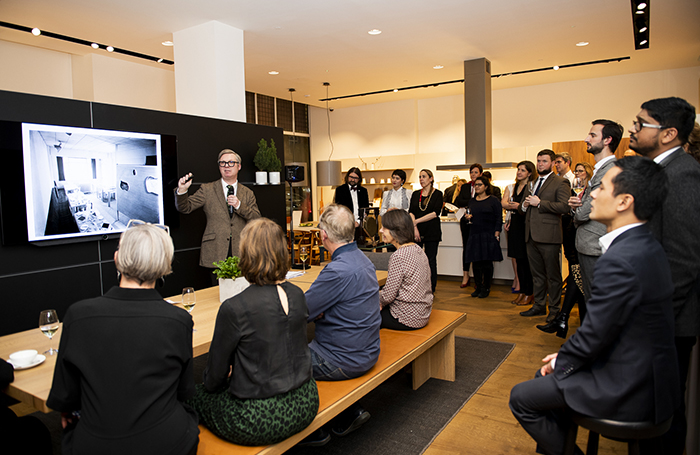
Pioneering Modernist Women, in sisterhood with Part W, 28 January 2020
For this event, the RIBA partnered with the campaign group Part W for an evening dedicated to the role that a number of key pioneering female architects and housing consultants played in the history of modern British architecture.
The event featured short presentations highlighting the stories of six key women, namely: Elizabeth Denby; Margaret Justin Blanco White; Mary Crowley (Medd); the partnership of Norah Aiton and Betty Scott; and Sadie Speight.
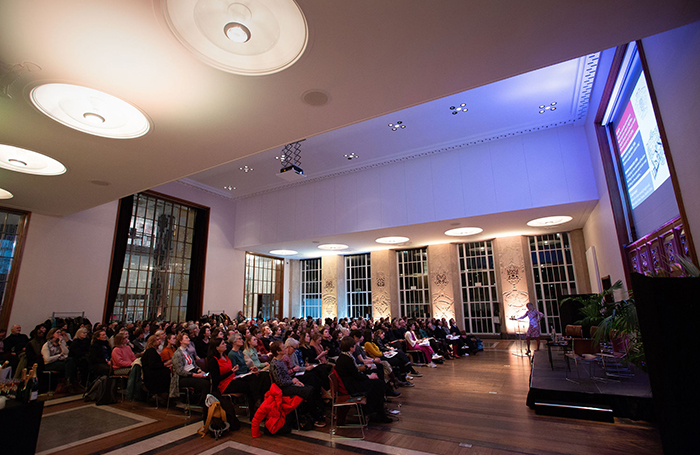
These were delivered by a diverse panel of inspirational women working in the built environment today, who shared their knowledge whilst reflecting on what we can continue to learn from these modernist pioneers. Contributors to the event were Abigail Patel, Claire Bennie, Elizabeth Darling, Lynne Walker, Stephanie Edwards, Yasmin Shariff and Yemi Aladerun.
The event was curated in partnership with Part W in sisterhood with their ‘Alternative Campaign’. This crowd-sourced list celebrates women who have consistently been overlooked and unrepresented in architecture. This resulted in over a hundred nominations for women who have made incredible contributions to the built environment over the past 171 years.
Bauhaus Exploration Workshop: tour and creative activity for blind and partially sighted visitors, 25 January 2020
This workshop was the first event at the RIBA specifically for blind and partially sighted people, and it explored the impact of the Bauhaus and the birth of Modernism in Britain. It was delivered by the RIBA in partnership with VocalEyes.
It started with a guided tour of the RIBA’s Beyond Bauhaus and the associated display in the First Floor Gallery László Moholy-Nagy in Britain – Between the New Vision and the New Bauhaus. It was followed by a creative making activity using 3D drawing pens, inspired by the exhibition and the RIBA’s collections.
The workshop was led by artist Sally Booth and supported by RIBA staff.
